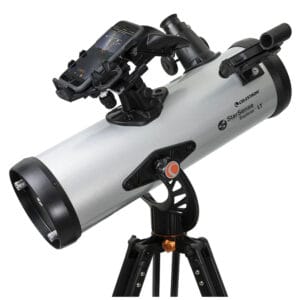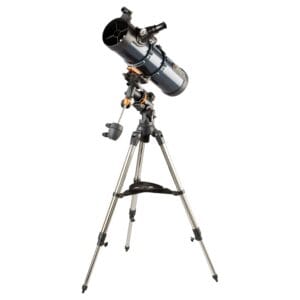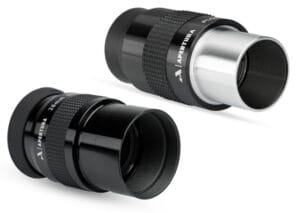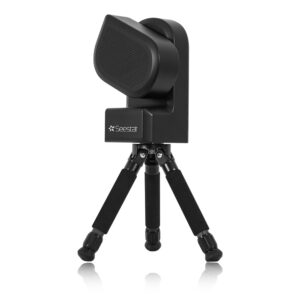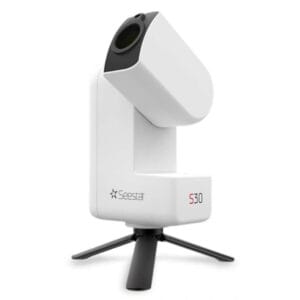The Vespera II vs Vespera Pro: When considering high-end smart telescopes, the Vespera II and Vespera Pro by Vaonis are common choices. While similar in design, they have crucial differences in sensor, image quality, and software features. In this comparison, you’ll discover which one better suits your observation or astrophotography needs.
Vespera II vs Vespera Pro: Image Quality and Sensor
The biggest upgrade in the Pro version is the camera. The Vespera Pro features a 12 MP Sony IMX676 sensor with improved color reproduction and contrast. The Vespera II uses an 8 MP variant of the same sensor line. In practice, this means:
- Vespera Pro shows finer details in nebula structures and galactic arms.
- Vespera II is still impressively sharp, but slightly less refined at high magnification.
On clear nights, with long exposures and light post-processing, you’ll notice the difference especially with smaller deep-sky objects like the Rock Nebula or the Fish Stream.
Field of View Mosaic Mode
Both models offer a panorama mode (Covalens), which automatically photographs large portions of the sky. However, the basics are slightly different:
- Vespera II: 1.6° x 1.6° field of view.
- Vespera Pro: 1.6° x 1.6°, but with higher resolution per pixel.
Both scopes capture objects like the Orion Nebula or the Andromeda Galaxy in full glory in mosaic mode, but the Pro requires less post-processing.
Ease of Use, Storage, and Battery Life
In terms of usage, they’re nearly identical: both work through the Singularity app, focus automatically, offer live stacking, and have an intuitive interface. Differences:
- Storage: Vespera II has 25 GB, the Pro 225 GB – important for long sessions.
- Battery: Both last 11 hours, more than enough for a full night.
- Weight and portability: both 5 kg, easy to carry in the backpack.
Software and Community Features
The Vespera Pro is equipped with advanced FITS-export and Pro Tools, allowing you to fine-tune histograms and exposure settings yourself. Ideal for advanced users who want to post-process images in PixInsight or Photoshop.
The Vespera II offers a plug-and-play experience, with presets for Moon, Sun, planets, and deep-sky – more than sufficient for beginners and enthusiasts without post-processing experience.
Vespera II vs Vespera Pro: who is each for?
| Profile | Best Choice |
|---|---|
| Beginner or Family | Vespera II |
| Experienced Astrophotographer | Vespera Pro |
| Traveler or RV Owner | Both (equally compact) |
| Sharing Images on Social Media | Vespera II |
| Editing and Printing | Vespera Pro |
Still Undecided? Consider this:
Are you new to astrophotography, mainly want to share on social media, or quickly enjoy beautiful images without post-processing? Then the Vespera II is your ideal starting point.
Do you want more control, higher resolution, and enjoy working with software like PixInsight? Then the Vespera Pro offers much more room to grow. Especially if you aspire to print your images large or edit them professionally.
Also consider how often you’ll use the telescope, how much storage you think you’ll need, and whether you’re interested in scientific projects via the Pro Tools.
Conclusion: Vespera II vs Vespera Pro
The Vespera II is one of the most user-friendly smart telescopes on the market. It delivers beautiful images without hassle. The Vespera Pro builds on this and adds more control, resolution, and storage – perfect for those who want to take things a step further. But if we have to choose, our preference goes to the V2.
However, choosing between the Vespera II and Vespera Pro depends not only on specifications but also on your expectations and learning goals. Do you want to experiment with post-processing, photograph larger objects, or collaborate in educational settings? Then the Pro clearly has the advantage. But for many hobbyists, the Vespera II already offers ample satisfaction. Both models offer a unique combination of simplicity and quality, making them powerful choices in this rapidly growing smart telescope market.
👉 Check out the Vespera II or the Vespera Pro on Telescoop.nl.


